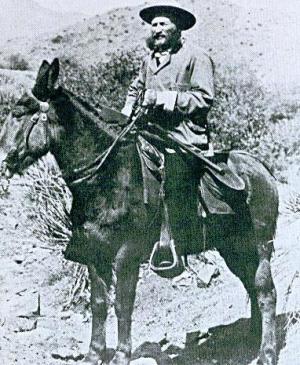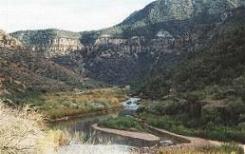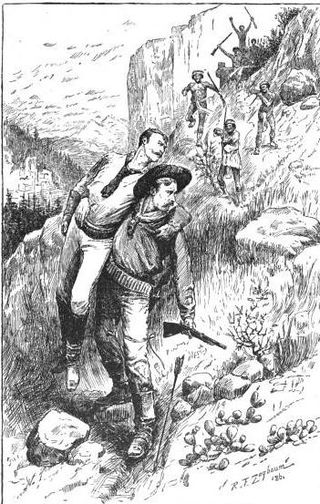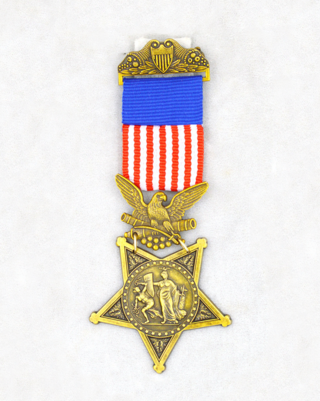
The Apache Wars were a series of armed conflicts between the United States Army and various Apache tribal confederations fought in the southwest between 1849 and 1886, though minor hostilities continued until as late as 1924. After the Mexican–American War in 1846, the United States annexed conflicted territory from Mexico which was the home of both settlers and Apache tribes. Conflicts continued as American settlers came into traditional Apache lands to raise livestock and crops and to mine minerals.

The Apache Scouts were part of the United States Army Indian Scouts. Most of their service was during the Apache Wars, between 1849 and 1886, though the last scout retired in 1947. The Apache scouts were the eyes and ears of the United States military and sometimes the cultural translators for the various Apache bands and the Americans. Apache scouts also served in the Navajo War, the Yavapai War, the Mexican Border War and they saw stateside duty during World War II. There has been a great deal written about Apache scouts, both as part of United States Army reports from the field and more colorful accounts written after the events by non-Apaches in newspapers and books. Men such as Al Sieber and Tom Horn were sometimes the commanding officers of small groups of Apache Scouts. As was the custom in the United States military, scouts were generally enlisted with Anglo nicknames or single names. Many Apache Scouts received citations for bravery.

The Battle of Turret Peak occurred March 27, 1873 in the Arizona Territory between the United States Army and a group of Yavapai and Tonto Apaches as part of Lieutenant Colonel George Crook's campaign to return the natives to reservations.

The Battle of Salt River Canyon, the Battle of Skeleton Cave, or the Skeleton Cave Massacre was the first principal engagement during the 1872 Tonto Basin Campaign under the command of Lieutenant Colonel George Crook. It was part of the Yavapai War from 1871 to 1875 against the Yavapai people, a Native American tribe in Arizona.
George G. Wortman was a 19th-century American soldier who served in the U.S. Army during the American Civil War and the Indian Wars. During Colonel Thomas L. Crittenden's campaign against the Apache Indians, Wortman served as a sergeant with the 8th U.S. Cavalry and participated in several notable engagements during the conflict. he later received the Medal of Honor for his service in the Arizona Territory during the summer of 1868.
Rudolph von Medem was a German-born American soldier in the U.S. Army who served with the 5th U.S. Cavalry during the Indian Wars. He was one of three men received the Medal of Honor for "gallantry in action and campaigns" against the Western Apaches in the Arizona Territory during the Apache Wars.

Elsatsoosu, also called Elsatsoosh, was an Apache Indian scout in the U.S. Army who served under Lieutenant Colonel George Crook during the Apache Wars. He guided cavalry troopers against renegade Apaches in the Arizona Territory during Crook's winter campaign of 1872–73 and was one of ten scouts later who received the Medal of Honor for gallantry.

John Nihill was an Irish-born soldier in the U.S. Army who served with the 5th U.S. Cavalry during the Indian Wars. A participant in the Apache Wars, he received the Medal of Honor for bravery when he single-handedly fought off four Apache warriors in the Whetstone Mountains of Arizona on July 13, 1872. At the time of his death, he was the only enlisted man to be admitted as a member of the Military Order of the Loyal Legion of the United States.
Henry Newman was a German-born soldier in the U.S. Army who served with the 5th U.S. Cavalry during the Indian Wars. In the Apache Wars, he was one of three men who received the Medal of Honor for gallantry against a hostile band of Apache Indians in the Whetstone Mountains of Arizona on July 13, 1872.
Nannasaddie was an Apache Indian scout in the U.S. Army who served under Lieutenant Colonel George Crook during the Apache Wars. He guided cavalry troopers against renegade Apaches in the Arizona Territory during Crook's winter campaign of 1872–73 and was one of ten scouts who later received the Medal of Honor for gallantry.

Nantaje, also called Nantahe, was an Apache Indian scout in the U.S. Army who served under Lieutenant Colonel George Crook during the Apache Wars. He guided cavalry troopers against renegade Apaches in the Arizona Territory during Crook's winter campaign of 1872-73 and was one of ten scouts who later received the Medal of Honor for gallantry.
Sergeant Frederick Jarvis was an American soldier in the United States Army who served with the 1st U.S. Cavalry regiment during the Apache Wars. He was one of thirty-two men received the Medal of Honor for gallantry fighting Cochise and the Apache Indians in the Chiricahua Mountains of Arizona, known as the "Campaign of the Rocky Mesa", on October 20, 1869.
Jim "The Great", born Bow-os-loh, was an Apache Native American scout in the U.S. Army who served under Lieutenant Colonel George Crook during the Apache Wars. He guided cavalry troopers against renegade Apaches in the Arizona Territory during Crook's winter campaign of 1872-73 and was one of ten scouts later awarded the Medal of Honor for gallantry.
Sergeant Nicholas "Sam" Foran was an American soldier in the U.S. Army who served with the 8th U.S. Cavalry during the Apache Wars. He was one of thirty-four men who received the Medal of Honor for gallantry in several engagements against the Apache Indians in the Arizona Territory from August to October 1868.

Sergeant Bernard "Barney" Taylor was an American soldier in the U.S. Army who served with the 5th U.S. Cavalry during the Apache Wars. He was one of three men received the Medal of Honor for gallantry, Taylor rescuing wounded commander Lieutenant Charles King, while battling the Western Apache near Sunset Pass in Arizona on November 1, 1874. He died two days after receiving the award.
First Sergeant James H. Turpin was an American soldier in the United States Army who served with the fifth U.S. Cavalry regiment during the Apache Wars. Turpin was one of 12 men received the Medal of Honor for gallantry in several engagements with the Apache Indians in the Arizona Territory during Lieutenant Colonel George Crook's "winter campaign" between 1872 and 1873.
First Sergeant Rudolph Stauffer was a Swiss-born American soldier in the U.S. Army who served with the 5th U.S. Cavalry in the Apache Wars. He was one of twelve soldiers, along with ten Apache Scouts, awarded the Medal of Honor during Lieutenant Colonel George Crook's "winter campaign" of 1872–73, being cited for gallantry in battle against renegade Apaches near Camp Hualpai. Charles King, while serving with the 5th U.S. Cavalry in his youth, wrote of him in his memoirs as "grim old Stauffer, the first sergeant".
Sergeant John P. Schnitzer was an American soldier and wagoner in the U.S. Army who served with both the 23rd U.S. Infantry and 6th U.S. Cavalry in the New Mexico Territory during the Apache Wars. He was awarded the Medal of Honor, along with First Lieutenant Wilber Wilder, for rescuing a fellow soldier under heavy fire while fighting the Apache at Horseshoe Canyon on April 23, 1882, which he received fourteen years later.

Private William H. Strayer was an American soldier in the U.S. Army who served with the 3rd U.S. Cavalry during the Indian Wars in Nebraska. He was one of four men, along with Sergeant John H. Foley, First Sergeant Leroy Vokes and civilian scout William F. "Buffalo Bill" Cody, awarded the Medal of Honor for gallantry in action against a Miniconjou Sioux raiding party at the Loupe Fork of the Platte River on April 26, 1872.

First Sergeant Richard Barrett was an Irish-born American soldier in the U.S. Army who served with the 1st U.S. Cavalry Regiment during the Indian Wars. He was awarded the Medal of Honor during the Apache Wars when he voluntarily led a charge against a group of hostile Tonto Apaches at Sycamore Canyon on May 23, 1872.










